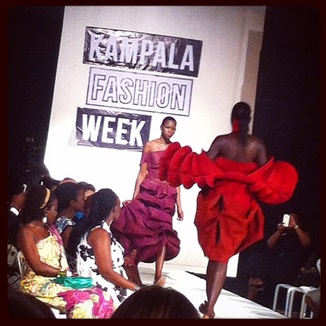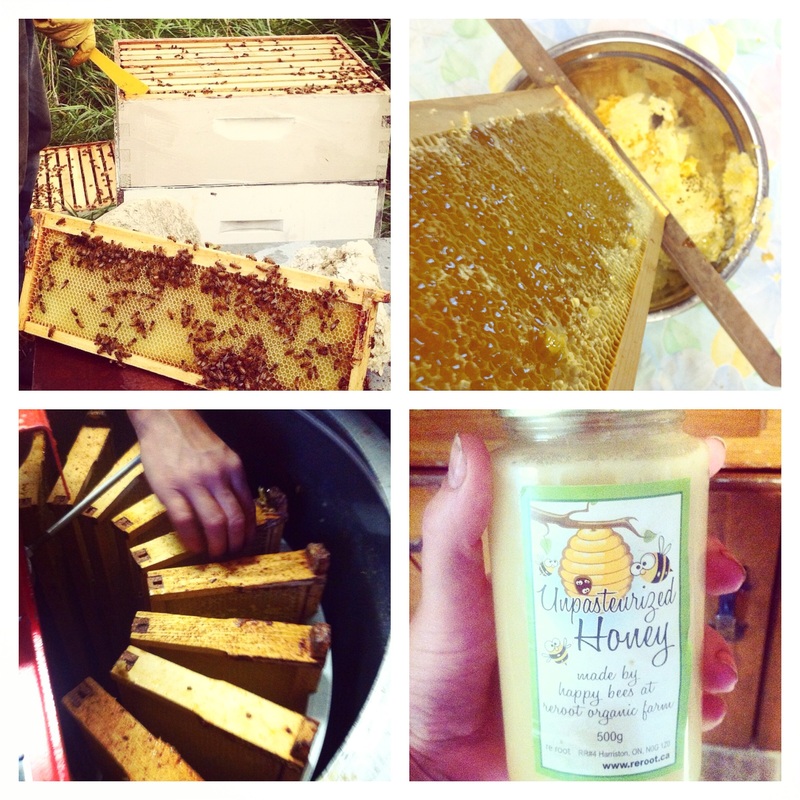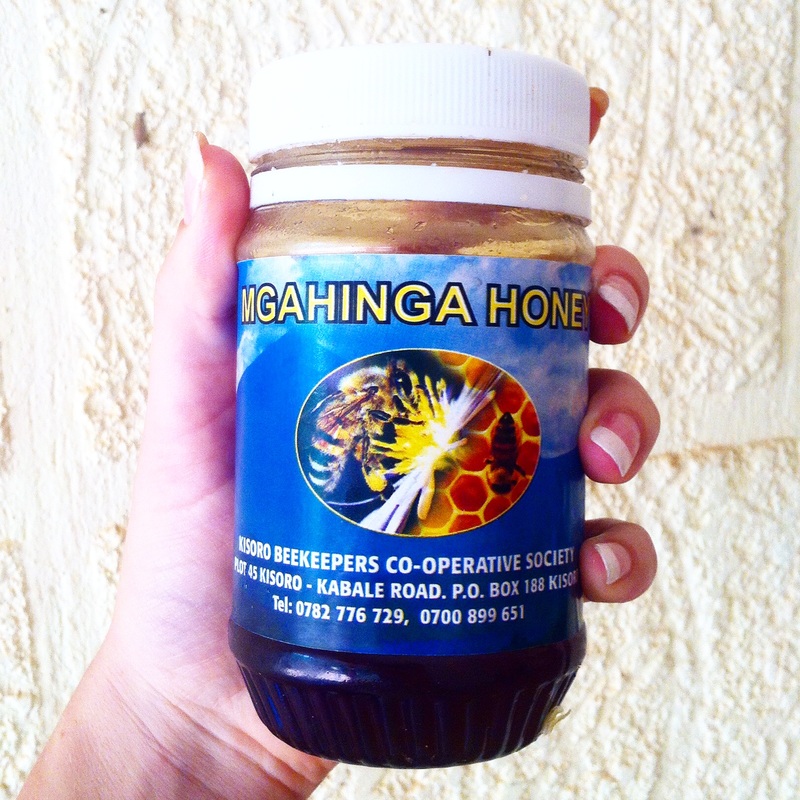 José Hendo's bark cloth looks
José Hendo's bark cloth looks Buy local. It’s the 100 mile diet. Support your community. It makes economic sense, or in this case, shillings. I have heard this message so many times in Canada, and it is what Simon Kaheru was teaching his kids and some confounded shopkeeper in this brilliant article, which ran in Sunday’s New Vision.
Simon’s article had me jumping for joy (which was appropriate because I was at a football match - mbogo 1 : mamba 2 - though I cannot say definitively if any goal was being scored at the time)! I am joining Simon’s campaign to promote buying local. Today in the supermarket, I was checking the labels for “made in Uganda” before choosing what to buy. Rather than subsidizing the lush lifestyles of American, German or Chinese business executives when I shop, my shillings are staying here, paying Ugandans for their good work, and maybe helping someone afford school fees in Jinja or Mbale. There is certainly no shortage of made in Uganda products. Personally, I am passionate about passion fruit juice and avocados as big as my face.
This past weekend, I attended a fantastic event organized by Gloria Wavamunno called Kampala Fashion Week. Among the designers showcasing their connections were: Kwesh, Kas Wear, Eguana, Martha Jabo, Sylvia Owori, J & Kainembabazi, Gloria Wavamunno , Zanaa, Catherine & Sons, and Jose Hendo. The fashion show was sold out, socialites were standing at the back of the tent to get a peak of Kamapala-made clothes, and they were not disappointed. I hereby call on all Ugandan celebrities and corporate folk to buy from the above designers and show Ugandans and the world what talent we have here! Of course, most other Ugandans wouldn’t be able to afford these clothes.
I’m not going to lie to you. Sometimes buying local means spending more money on similar products. A Ugandan businessman recently told me about a local company that was making socks. It cost them 1200UGX to make each pair and they topped up the price to 1500UGX to make a profit. Chinese companies were selling socks for 700UGX, so Ugandans chose the cheaper Chinese socks and the Ugandan company failed to prosper. This is because of economies of scale. Over the past decades, China has invested in building massive factories the size of Central Kampala and Kisenyi combined. So when the Chinese produce such a large quantity with facilities that have already been paid for, their cost of production is much less. Nevertheless, the retail price difference makes it difficult for average Ugandans to justify paying more than double for local socks to warm their toes in the rainy season.
However, there are other products produced in Uganda that are actually cheaper than imported alternatives, like honey. I am not sure how this is possible, because I have harvested honey myself, and it is quite a labour intensive process, especially for the bees! But surely we can all get behind buying local honey, when it both saves money and invests in the local economy.
Simon’s article had me jumping for joy (which was appropriate because I was at a football match - mbogo 1 : mamba 2 - though I cannot say definitively if any goal was being scored at the time)! I am joining Simon’s campaign to promote buying local. Today in the supermarket, I was checking the labels for “made in Uganda” before choosing what to buy. Rather than subsidizing the lush lifestyles of American, German or Chinese business executives when I shop, my shillings are staying here, paying Ugandans for their good work, and maybe helping someone afford school fees in Jinja or Mbale. There is certainly no shortage of made in Uganda products. Personally, I am passionate about passion fruit juice and avocados as big as my face.
This past weekend, I attended a fantastic event organized by Gloria Wavamunno called Kampala Fashion Week. Among the designers showcasing their connections were: Kwesh, Kas Wear, Eguana, Martha Jabo, Sylvia Owori, J & Kainembabazi, Gloria Wavamunno , Zanaa, Catherine & Sons, and Jose Hendo. The fashion show was sold out, socialites were standing at the back of the tent to get a peak of Kamapala-made clothes, and they were not disappointed. I hereby call on all Ugandan celebrities and corporate folk to buy from the above designers and show Ugandans and the world what talent we have here! Of course, most other Ugandans wouldn’t be able to afford these clothes.
I’m not going to lie to you. Sometimes buying local means spending more money on similar products. A Ugandan businessman recently told me about a local company that was making socks. It cost them 1200UGX to make each pair and they topped up the price to 1500UGX to make a profit. Chinese companies were selling socks for 700UGX, so Ugandans chose the cheaper Chinese socks and the Ugandan company failed to prosper. This is because of economies of scale. Over the past decades, China has invested in building massive factories the size of Central Kampala and Kisenyi combined. So when the Chinese produce such a large quantity with facilities that have already been paid for, their cost of production is much less. Nevertheless, the retail price difference makes it difficult for average Ugandans to justify paying more than double for local socks to warm their toes in the rainy season.
However, there are other products produced in Uganda that are actually cheaper than imported alternatives, like honey. I am not sure how this is possible, because I have harvested honey myself, and it is quite a labour intensive process, especially for the bees! But surely we can all get behind buying local honey, when it both saves money and invests in the local economy.
The true value in buying local is to build up businesses right here in Uganda, and there are many opportunities available to do just that, if we are willing to share the cost of development. You don't have to be a big business person to invest; just buy local! Personally, I am committed to buying Ugandan-made products over foreign ones whenever I can for as long as I am here.
My mother and father, both diligent Canadian consumers with hair that honours the Whitehead family name, taught me to shop on principle. Like many Ugandans, they buy first from their friends, knowing that this is the best way to get invited to dinner (ensuring that our neighbours can afford to feed them). When they need a product that our friends don’t make, they start looking at the “made in” labels, trying to buy as close as possible to home. My mother proudly serves “the hundred mile diet,” and my father refuses to wear foreign clothes. I am hoping that if I send him some Kampala fashion for Christmas, he’ll make an exception.
Thanks for reading. Please share to strengthen the Made in Uganda movement!
My mother and father, both diligent Canadian consumers with hair that honours the Whitehead family name, taught me to shop on principle. Like many Ugandans, they buy first from their friends, knowing that this is the best way to get invited to dinner (ensuring that our neighbours can afford to feed them). When they need a product that our friends don’t make, they start looking at the “made in” labels, trying to buy as close as possible to home. My mother proudly serves “the hundred mile diet,” and my father refuses to wear foreign clothes. I am hoping that if I send him some Kampala fashion for Christmas, he’ll make an exception.
Thanks for reading. Please share to strengthen the Made in Uganda movement!



